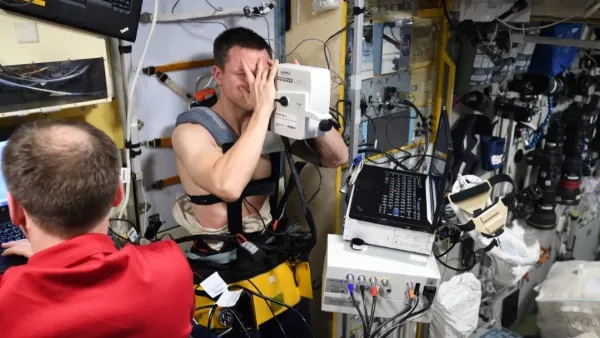
A significant number of astronauts spending extended time aboard the International Space Station (ISS) have reported changes in visionposing a critical challenge for future deep-space missions. Studies indicate that nearly 70% of astronauts who spend six to twelve months in microgravity experience ocular changeslinked to a condition known as Spaceflight-Associated Neuro-Ocular Syndrome (SANS).
Symptoms include:
The primary cause is believed to be fluid redistribution in microgravitywhich increases pressure on ocular structures. While many astronauts recover upon returning to Earththe long-term effects remain uncertainmaking vision health a key concern for missions beyond low Earth orbitincluding Mars exploration.
A study published in Microgravityled by Santiago Costantino at the University of Montrealanalyzed 13 astronauts who spent five to six months on the ISS. The participants, with an average age of 48represented space agencies from the United States, Europe, Japan, and Canada.
The research measured changes in:
These findings confirm that extended space travel significantly alters ocular physiologyunderscoring potential risks for long-duration missions.
First documented in the early 2000sSANS has been observed in both NASA astronauts and Russian cosmonauts aboard the Mir space station. NASA officially classified it as a medical condition in 2011.
Bodily fluid shifts in microgravity are believed to be the primary factor, though the exact mechanisms remain under investigation.
Efforts are underway to develop solutions to mitigate SANS- vision issues. Potential countermeasures include:
According to Space.com, Costantino’s research suggests that changes in the mechanical properties of the eye could serve as biomarkers for SANSaiding in early detection and targeted intervention.
With planned manned missions to Mars and beyondspace agencies are prioritizing solutions to protect astronaut vision. Understanding how microgravity affects the human body—especially ocular health—will be crucial for ensuring astronaut safety and mission success in the next era of space exploration.